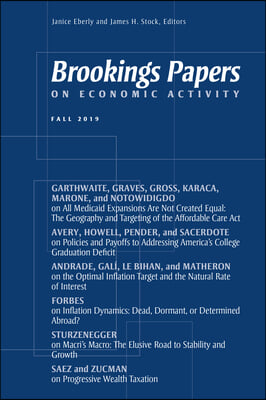Budgetary Implications of Economic Scenarios with Higher and Lower Interest Rates
IF 2.8
3区 经济学
Q1 ECONOMICS
引用次数: 0
Abstract
ABSTRACT:This paper illustrates how the Congressional Budget Office's (CBO's) July 2021 baseline budget projections would have differed if the agency had used two alternative economic scenarios. The high-sixth scenario is based on the average values of projections for several variables—including inflation and the growth of gross domestic product after removing the effects of inflation (real GDP)—from the six Blue Chip forecasters (about one-sixth of the total) with the highest average interest rate projections. The low-sixth scenario is based on the average values of projections for the same variables from the six Blue Chip forecasters with the lowest average interest rate projections. Using its simplified model of how macroeconomic changes would affect the federal budget, the CBO found that projected deficits would be $2.1 trillion larger from 2022 to 2031 under the high-sixth scenario (totaling $13.8 trillion) than under the low-sixth scenario ($11.7 trillion). Despite a greater amount of debt in dollar terms under the high-sixth scenario, federal debt held by the public as a percentage of GDP would total about 101 percent at the end of 2031 under both scenarios.利率高低对经济情景的预算影响
摘要:本文阐述了如果国会预算办公室(CBO)使用两种可供选择的经济情景,该机构2021年7月的基线预算预测会有何不同。高六分之一的情景是基于六个蓝筹预测者(约占总数的六分之一)对平均利率预测最高的几个变量的预测的平均值,包括通货膨胀和去除通货膨胀影响后的国内生产总值(实际GDP)的增长。低六种情况是根据六个平均利率最低的蓝筹预测者对相同变量的预测的平均值得出的。利用宏观经济变化如何影响联邦预算的简化模型,国会预算办公室发现,在高六分之一情景(总计13.8万亿美元)下,2022年至2031年的预计赤字将比低六分之一情景(11.7万亿美元)下高出2.1万亿美元。尽管在第六种情况下,以美元计算的债务数额更大,但在这两种情况下,到2031年底,公众持有的联邦债务占GDP的比例将达到101%左右。
本文章由计算机程序翻译,如有差异,请以英文原文为准。
求助全文
约1分钟内获得全文
求助全文
来源期刊

Brookings Papers on Economic Activity
ECONOMICS-
CiteScore
10.10
自引率
0.00%
发文量
12
期刊介绍:
The Brookings Papers on Economic Activity (BPEA) is a semi-annual academic conference and journal that pairs rigorous research with real-time policy analysis to address the most urgent economic challenges of the day. Working drafts of the papers are presented and discussed at conferences typically held twice each year, and the final versions of the papers and comments along with summaries of the general discussions are published in the journal several months later. The views expressed by the authors, discussants and conference participants in BPEA are strictly those of the authors, discussants and conference participants, and not of the Brookings Institution. As an independent think tank, the Brookings Institution does not take institutional positions on any issue.
 求助内容:
求助内容: 应助结果提醒方式:
应助结果提醒方式:


